POSTED BY
Nicole Sopkovich
There has been a massive shift in health provision over the last two years, largely to underpin national programmes designed to combat an almost unprecedented pandemic.
This has forced both structural and procedural changes on hospitals and health care providers, as well as creating a seismic shift in patient expectations and needs.
The impact has been complex. Hospitals and health care providers have quickly accelerated the adoption of technological solutions that expedite both diagnosis and treatment. People have come to expect flexible use of digital and remote interaction rather than what is now perceived as old fashioned, pre-pandemic practices such as face-to-face consultancy and long stays in hospital.
So, what are the key trends in medical technology for 2021?
The cardiovascular bounce back
Surgical volumes are a barometer of hospital activity. From the outset of Covid 19 hospitals cancelled non-essential operations, focussing on intensive care.
Although there was the immediate cessation of non-essential or elective surgeries, this phenomenon has not been limited to non-critical conditions, and the pandemic has seen a rise in pending cardio procedures among others.
It’s predicted that cardiovascular surgical procedures will bounce back driving a far higher demand than other surgeries in order to clear the backlog.
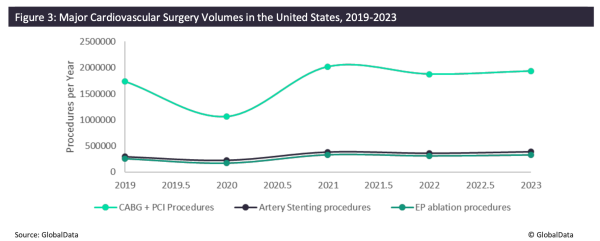
Laparoscopic and robotic surgery
One of the biggest growth areas in the last two years has been laparoscopy and robotic surgical procedures. It is predicted that robotic surgical procedures will outpace many other procedure types.
The number of laparoscopic surgeries is expected to grow by around 2.6% per year over the next 10 years with robotic procedures increasing by almost 10% a year.
Many hospitals have brought forward the purchase of robotic surgical equipment as part of their drive to expedite surgical backlogs.
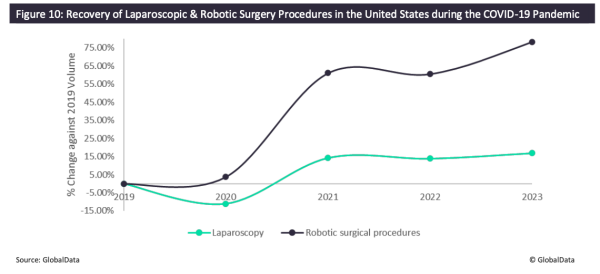
Telemedicine gets the call
Increased pressure on healthcare even before the pandemic was already a driver for the expansion of remote medical communication and monitoring.
The use of electronic and digital systems for the delivery of clinical care has clearly been accelerated by Covid 19, with further constraints in the capacity of healthcare providers and the reticence of the public to engage in more traditional engagement with healthcare professionals.
Estimated use of telemedicine increased by 50% in the first 3 months of the crisis.
In a recent global survey of 427 patients, 79% say that they do not meet their primary physicians in person, while 83% regarded telehealth as an established part of healthcare.
Telemedicine has seen double-digit growth in 2020 and this is set continue throughout 2021.
Remote patient monitoring is also growing. The market for external and implantable patient monitoring devices set to grow to over $1 billion globally by 2021, with double digit growth predicted in years to come.
Telemedicine represents a paradigm shift in healthcare.
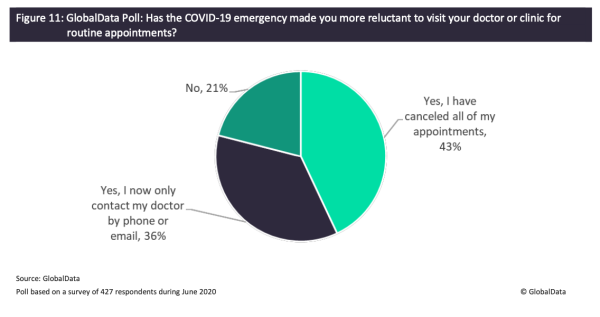
Working with artificial intelligence
Artificial intelligence will have a profound impact on every aspect of our lives. It has already impacted healthcare in several areas.
AI will aid diagnosis, providing actionable recommendations to physicians in real time. It will help with patient flow optimisation, by helping to triage patients, especially those with minor ailments.
Artificial intelligence can help train image analysis software to reach accuracy rates much higher than radiologists alone. AI will enhance medical imaging analysis such as CT images. Combined with robotic surgery AI will deliver high-precision robotic surgery with the capability to learn new procedures.
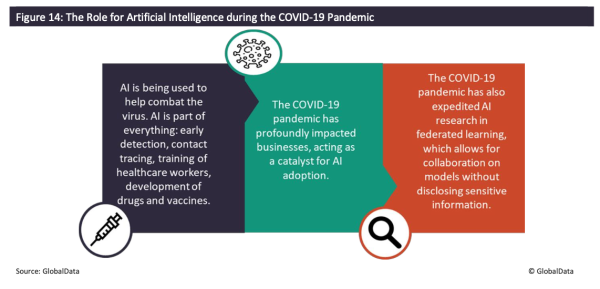
3D printing making an impression
3D printing is replacing traditional prototype development in all industries. The medical market was estimated to be worth 19 billion dollars in 2019 and is expected to grow to excess of 60 billion by 2030.
Currently the most common medical application is orthopaedics, however 3D printing is set to be used in almost every medical sector – from surgical guides and medical instruments to implants.
3D printing will be an integral part of prototyping, design, testing and manufacture, as well as helping to create anatomic models for training.
It can also provide enhanced personalisation, where part of a device such as a replacement joint or hearing aid can be tailored for an exact fit at the site of care.
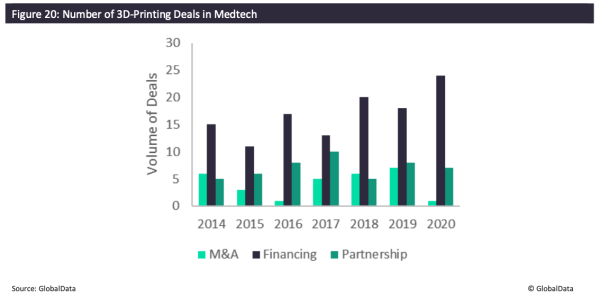
New methods put to the test
Covid 19 has led to an unprecedented increase in the use of testing, leading to some rapid developments of new approaches.
The use of biomarker tests is currently undergoing clinical trials could lead to better patient treatment and prediction of risk.
There has been the swift development of mobile PCR, where complex lab functions can be delivered in a compact portable format that take under an hour to deliver results. Isothermal PCR systems offer simpler, more cost-efficient instrumentation, at far lower cost.
CRISPR assays are instrument-free and are carried out on a paper strip. This is simple, low-tech and low-cost and could revolutionise point-of-care infectious disease diagnostics.
The Covid 19 global pandemic has had a major impact on healthcare. But pushed to the limit, the sector has embraced change and found new ways to work and new technologies. Above all, there is a sense of energy and a feeling that, despite the dramatic challenges of Covid 19, there is a welcome acceleration of innovation and a determination to make changes for the benefit of all.
[Information Source: Global Data]



